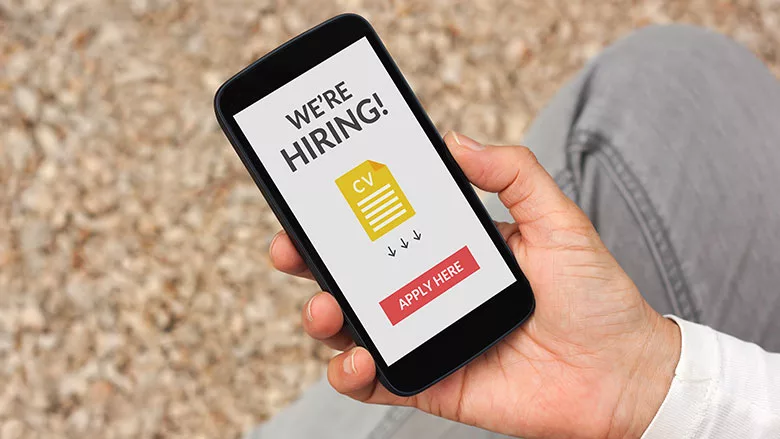Hiring Drillers? Think About the Job Candidate Experience
Applying for Drilling Jobs Shouldn’t be Long, Full of Roadblocks

A lot of good candidates use a smartphone or tablet as their primary way to job hunt. Make sure your process accounts for them.
Source: Getty Images
In today’s tight labor market, it’s more important than ever to catch the attention of job applicants by creating a positive candidate experience. But how do we accomplish this? How do we ensure we get the information we need from a job applicant, while also making the applicant process as seamless and smooth as possible?
These practical (and easy) ways to refine your application and interview process will create a candidate experience that helps you to attract more energized and productive employees.
Keep Time Top of Mind
One frequent complaint from job applicants is the amount of time it takes to hear back about a job opportunity. Candidates oftentimes apply for a position and don’t hear anything from the employer for months! A lengthy negotiating and onboarding process for those who do hear back can prove even more frustrating.
Look, we absolutely need to make sound hiring decisions. At the same time, we must also continuously look for ways to streamline our process for applicants. Keep a pulse on how long it takes to call an applicant after they apply. Do you require two or more interviews before making a job offer? Do you ask applicants to complete a lengthy employment application? Consider diving into your hiring process. Uncover any areas where you may be able to speed the process up or make it more efficient.
Optimize your Systems
Did you know that 90% of today’s job seekers search and apply for jobs on their mobile device? Consider the nature of the jobs we want to fill: drillers and helpers. I find that applicants for these roles do not typically search for employment sitting at a desk at home. Mobile optimization is critical for an efficient hiring process.
I always recommend that company leaders take the time to apply to their own jobs via a smartphone. This helps you quickly identify components of the process that might be clunky, confusing or just too much work for a job applicant.
Watch for Trends
Monitor trends to identify any problems in your hiring process. Time to hire, sometimes referred to as time to fill, is an important metric that you should compare to industry benchmarks. It helps you understand if your hiring process drags on too long, hits the average, or is short and effective!
Keep an eye on candidate fall-off. Do applicants respond when you call or email? Do they show up for scheduled interviews? Has an applicant “ghosted” after accepting a job offer? These trends might indicate a lengthy or ineffective hiring process. I recommend looking at fall-offs and exploring what they might show about company hiring processes.
Standardize the Interview
Last, but not least, standardize the interview process. Take time to look at the resume and application before meeting with a candidate, and have questions prepared for them. Showing up as an unprepared employer sends a bad first impression during an interview!
Spend time giving the applicant a realistic overview of the position. Reading a job description is one thing. Hearing an operational leader explain more about the role and the expectations helps paint a clearer picture.
As part of your interview process, spend time giving the applicant a realistic overview of the position. Reading a job description is one thing. Hearing an operational leader explain more about the role and the expectations helps paint a clearer picture. Always give an honest assessment of the role, because it creates a positive candidate experience during the interview process.
Attracting the right talent into drilling roles isn’t easy, and with a constricted labor market, we must be proactive and intentional with recruiting efforts. Ensuring a positive candidate experience goes a long way toward enhancing your company’s reputation in the market — as well as, hopefully, producing happy and productive employees!
Looking for a reprint of this article?
From high-res PDFs to custom plaques, order your copy today!






